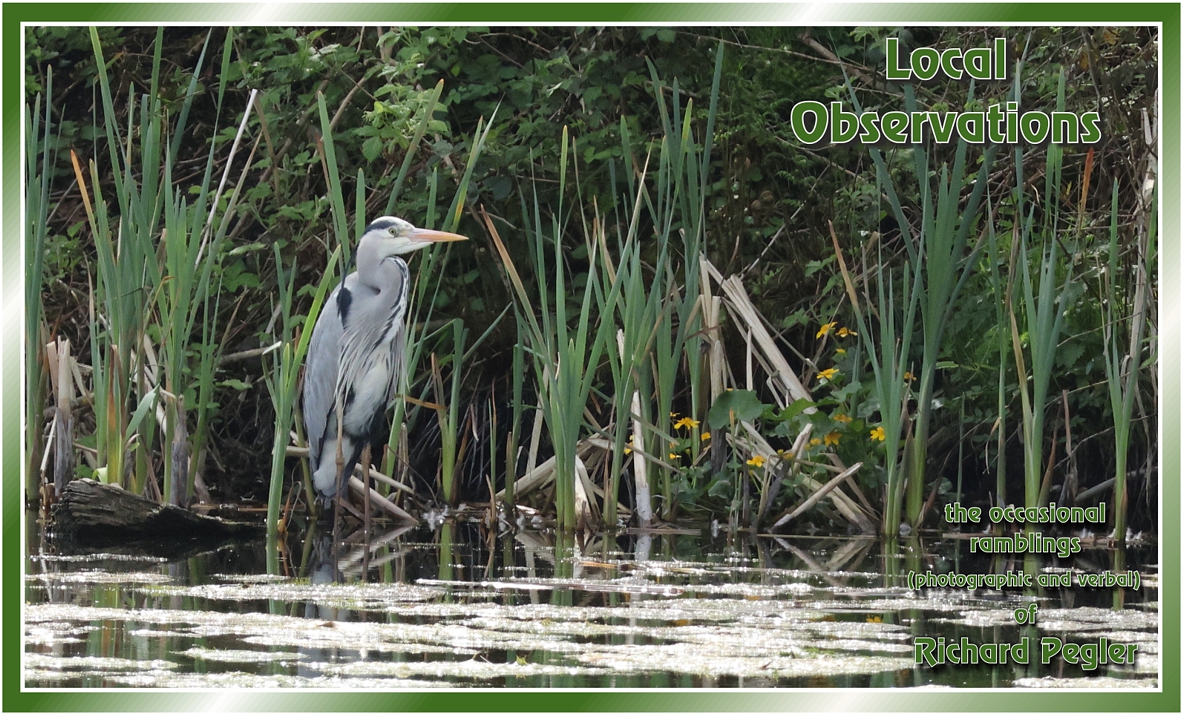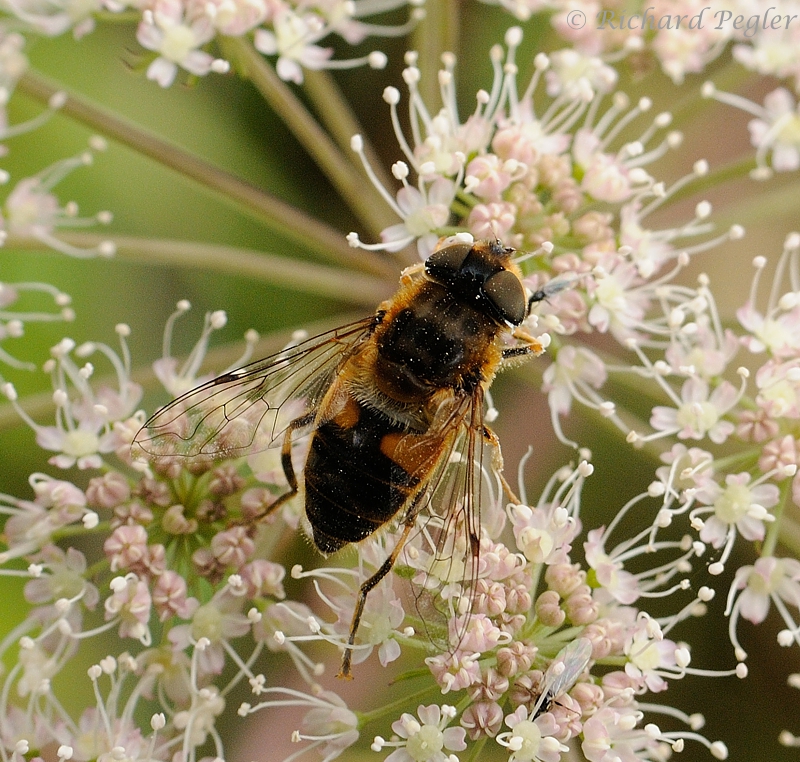Just over a year ago my lovely wife bought me a new lens for my camera - yes, she's wonderful like that! The lens was a Sigma 50-500, and greatly superior to the Sigma 150-500 that I'd previously been using. Not only was the overall quality of the images better, but the lens offered the ability for close focus work - you can take photos with the subject approximately 10 cm from the front of the lens hood! I didn't make good use of this last feature until the summer of 2015, but then I found a whole new world through being able to see small creatures and objects in far more detail. This led, amongst other things, to a growing interest in insects - not a serious scientific interest (although I may be heading down that route with dragonflies and damselflies!) but a sense of wonderment at what I was seeing. At my time of life, the retention powers of the grey cells are insufficient to be able to immerse myself fully in too many new interests!
I've already posted images of dragonflies, damselflies, and beetles from the second half of last year, so here's a few other bugs, etc. from that period, not previously shown.
I first photographed shield bugs when we used to have Common Green Shieldbug in our garden every year. Sadly, no shield bugs were observed in our garden in 2015, although I did find them elsewhere. The most amazing place for them was at Drakelow Nature Reserve, where I found three species of shield bug, plus a closely related Dock Bug in a stretch of approximately 5 metres! These bugs go through a number of stages (instars) before reaching maturity, and often different instars can be observed together at one time.
I start with the Common Green Shieldbug. My first observations were of 4th & 5th (final) instar nymphs and of adults, on 22nd September.
 |
| Common Green Shieldbug (Palomena prisina) (4th instar) - Drakelow Nature Reserve |
 |
| Common Green Shieldbug (Palomena prisina) (4th and 5th instars) - Drakelow Nature Reserve |
There is tremendous variation in the colours of this species, between green and black. This is mainly (but not totally) seasonal. My images do not show this fully but differences can be seen between that in the previous image and those in the subsequent two images, taken on that same day.
 |
| Common Green Shieldbug (Palomena prisina) (5th instar) - Drakelow Nature Reserve |
Here's one of an adult, also taken on that same day.
 |
| Common Green Shieldbug (Palomena prisina) (adult) - Drakelow Nature Reserve |
A visit to the same location on 30th September turned up large numbers of these bugs again. Here's one of a 5th instar on that day, with a colouring somewhere between my previous two images (above) of 5th instars.
 |
| Common Green Shieldbug (Palomena prisina) (5th instar) - Drakelow Nature Reserve |
A little closer to home, on 20th October, I came across this species again. The first image shows how flat they are in cross-section. These bugs are commonly known as 'stink bugs', and I include the second (rather poor) image because it shows the bug exuding fluid from its rear end in protest at my trying to persuade it to move to a more photogenic location. I suspect that this probably smelled quite evil, but I wasn't about to put my nose to it!
 |
| Common Green Shieldbug (Palomena prisina) (adult) - Normanton le Heath |
On both the days that I found Common Green Shieldbugs at Drakelow, there were good numbers of Dock Bugs mixed in with them. The first image, taken on 30th September, shows final instars of both Common Green Shieldbug and Dock Bug for size comparison.
 |
| Dock Bug and Common Green Shieldbug (final instars) - Drakelow Nature Reserve |
Here's more of the Dock Bugs. Again, some colour variation can be seen.
 |
| Dock Bug (Coreus marginatus) (final instar) - Drakelow Nature Reserve |
 |
| Dock Bug (Coreus marginatus) (adult) - Drakelow Nature Reserve |
Also present on 22nd September, in amongst the other bugs, was a single specimen of Hairy Shieldbug. This is a 5th instar nymph.
 |
| Hairy Shieldbug (Dolycoris baccarum) (final instar) - Drakelow Nature Reserve |
On 30th September there was also a lone specimen of Gorse Shieldbug in with the other bugs, but no sign of the Hairy Shieldbug.
 |
| Gorse Shieldbug (Piezodorus lituratus) (adult) - Drakelow Nature Reserve |
|
A little before the second half of the year (on 4th June, actually) I photographed a beautiful Lacewing. I'm used to seeing the pale green Lacewings, but I don't think I've ever seen this blue-coloured species before.
 |
| Chrysopa perla (Chrysopa perla) - Rutland Water, Lyndon Reserve |
On that same June day, a Scorpion Fly was spotted. These can look quite fearsome from some angles, but not so bad from this point of view! Unfortunately the mouthparts are missing from view behind the leaf.
 |
| Scorpion Fly (Panorpa communis) - Rutland Water, Lyndon Reserve |
I have great difficulty identifying most flies, so some of the flies I'll show now will be anonymous!
This next one is an unidentified hoverfly species from Rutland Water on the same day as the previous two insects.
 |
| Hoverfly sp. - Rutland Water, Lyndon Reserve |
- whereas this hairy hoverfly, which I took at first to be a bee, was at Drakelow on 22nd September.
 |
| Hoverfly sp. - Drakelow Nature Reserve |
The next image of a 'greenbottle' Blowfly is, I believe, one of the Lucilia species. It was taken at Spring Wood Nature Reserve on 16th June.
 |
| Blow Fly (Lucilia sp.) - Spring Wood Nature Reserve |
The next images are of a horsefly which goes by the name of Twin-lobed Deerfly. It was in Waderscrape Hide at Rutland Water. They can give a nasty bite!
 |
| Twin-lobed Deerfly (Chrysops relictus) - Rutland Water, Lyndon Reserve |
The next fly, which feeds on dung, is the spectacular Noon Fly. This one was photographed at Drakelow on 17th September.
 |
| Noon Fly (Mesembrina meridiana) - Drakelow Nature Reserve |
This last fly is, I believe, Nemorilla floralis (no 'common name' although far from uncommon!). It was taken at Drakelow on 22nd September.
 |
| Nemorilla floralis (Nemorilla floralis) - Drakelow Nature Reserve |
We next come to a couple of wasps. This first one, taken at Rutland Water on 27th August, is of the Common Wasp that disrupts summer picnics!
 |
| Common Wasp (Vespula vulgaris) - Rutland Water, Egleton Reserve |
This next creature was, in my childhood days, from a group classed as flies but now classed as wasps. It was found at Rutland Water on 9th September. I've cheated with these images as, in order to show that fearsome ovipositor I've had to turn the images through 90°. I cannot fully identify this species but believe it to be an Ichneumon Wasp of the Pimpla group. The problem is that I cannot find reference to one of these with such a long ovipositor (more than 50 % of its overall length!) and this large (from memory around 6 or 7 cm overall). Any help with its identification would be much appreciated. It was difficult to photograph as it was very active and didn't stay still for more than a second or two before moving to another position.
 |
| Ichneumon Wasp (Pimpla sp.?) - Rutland Water, Egleton Reserve |
I do feel that I'm starting to become something of a bug-er! Where it will lead to, who knows??
I hoping that the new camera body, with its superior resolution and with the Sigma 50-500 attached, will allow me to take better and more detailed images this year - roll on the summer!!
Thank you for dropping by. My next post may be back to owls - or it might feature some of the winter visitors to my garden. Please watch this space!













































